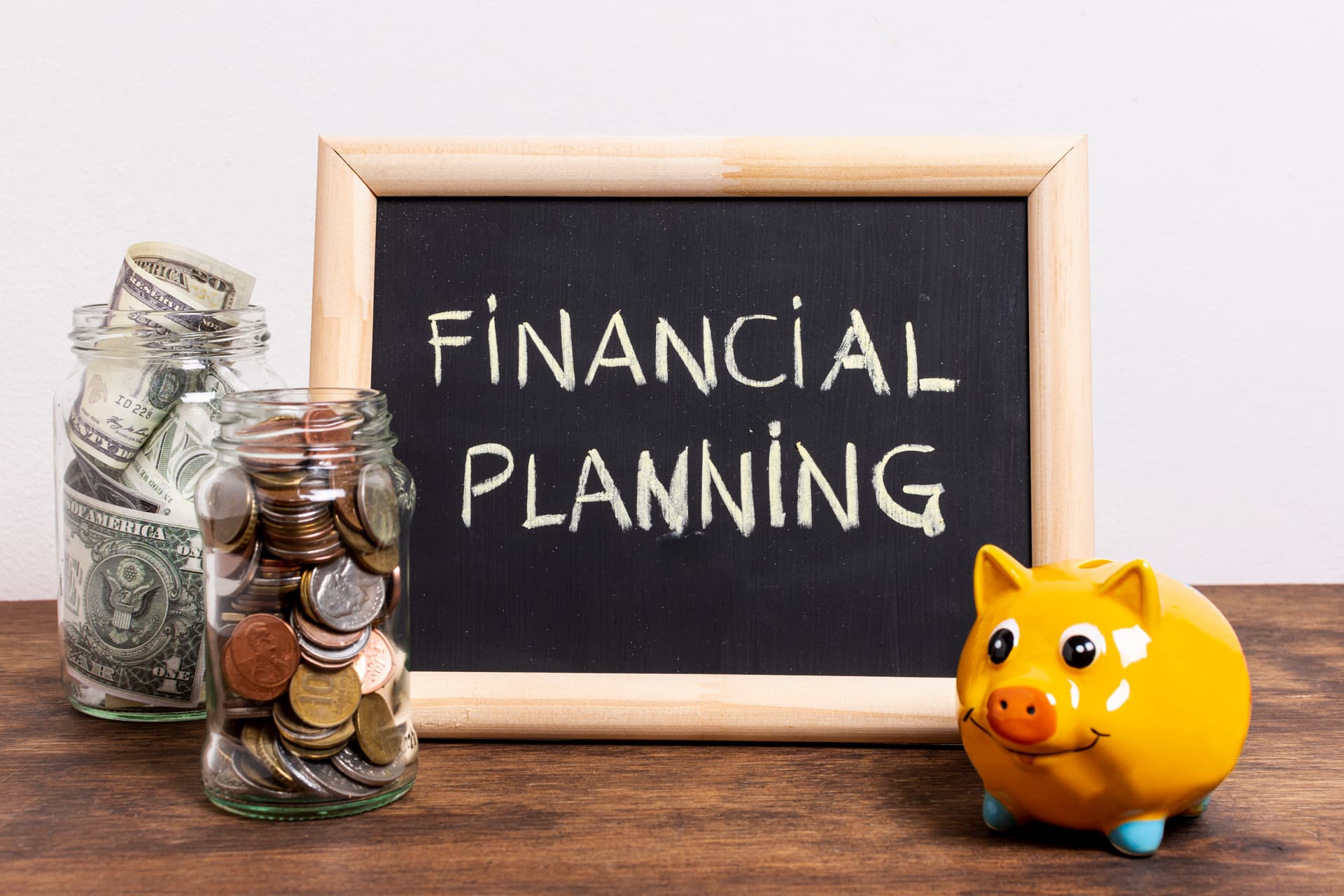How to Start an Emergency Fund With No Savings (Realistic Steps That Work in 2025)

Living paycheck to paycheck? Here's how you can still build an emergency fund — even if you're starting with $0. Real-world strategies, step-by-step plans, and money mindset shifts that actually work.
How to Start an Emergency Fund With No Savings (Realistic Steps That Work in 2025)
The Day Everything Fell Apart (And Why It Was the Best Thing That Ever Happened)
It was a chilly February morning when my car refused to start. I had just poured my coffee, running a few minutes late for work, as usual. But that morning didn’t go as planned. The engine wouldn’t turn over, and I felt that familiar pit in my stomach — not from the inconvenience, but from the fear of what I already knew: I couldn’t afford to fix it.
When the mechanic finally gave me the verdict — a $780 repair bill — I smiled politely and nodded, but inside, I was panicking. My checking account had less than $50. No savings. No rainy-day fund. Just a growing credit card balance and a feeling of helplessness.
That was my wake-up call.
And if you’re here reading this because you’ve felt that same sinking feeling — whether it was a surprise medical bill, a broken appliance, or even just an overdraft fee that threw off your whole month — know this: you are not alone, and it’s not too late.
In fact, it’s the perfect time to take control.
Why Most People Struggle to Save — Especially in 2025
You’ve probably seen the statistics. According to a 2025 LendingClub report, more than 61% of Americans are living paycheck to paycheck — including those earning over $100,000 a year.
So if you’ve been thinking, “I just need to make more money, then I’ll save,” the reality is: income alone won’t save you.
The real reasons we struggle to save are far more personal and human:
- The rising cost of groceries, rent, and healthcare eat up any extra dollars.
- We’re constantly reacting to financial emergencies, not preparing for them.
- Most of us were never taught how to manage money. Budgeting, saving, investing — it’s like learning a second language in adulthood.
And let’s be honest — when you’re already stretched thin, saving money can feel like a luxury you simply can’t afford.
But here’s the thing: saving isn’t about how much you make — it’s about how you think.
What Even Is an Emergency Fund — and Why Do You Need One?
Let’s take the pressure off the definition for a moment.
An emergency fund isn’t about having tens of thousands of dollars sitting in a high-yield account. It’s not about hitting a magical 3-to-6-months-of-expenses goal overnight.
At its core, an emergency fund is simply this:
Money set aside for life’s “oh no” moments.
A burst pipe. A surprise layoff. A medical co-pay. A last-minute flight to see a sick loved one. These aren’t extravagant things. They’re part of life.
And when you don’t have a cushion, they turn into crises. You swipe a credit card and hope next month will be easier — until it’s not. That stress compounds fast.
Even $100 can change everything. That’s a tank of gas, a doctor’s visit, a week’s worth of groceries.
So instead of worrying about saving thousands, let’s talk about how to get to that first $100 — together.
The Shift That Changes Everything: Saving Is a Habit, Not a Number
For most of my life, I believed that saving was something people did after they got rich. Rich people save money. Broke people pay bills. That’s the narrative many of us grow up with.
But that’s backwards.
In reality, saving is what helps you stop being broke. It gives you breathing room. It’s not about being disciplined or frugal or lucky. It’s about building one small habit at a time.
You don’t need to change your whole life. You just need to create a small crack in the routine. A little wedge of intention. A moment where you say, “This $5? I’m keeping it for myself. For later. For safety.”
That’s it. That’s the beginning of your emergency fund.
Let me show you how to start — no fluff, no judgment.
Starting From Zero: A Realistic Step-by-Step Plan
When I finally decided to take control of my money, I didn’t start with a budget or a fancy savings app. I started by opening a new bank account.
This account had one job: hold my emergency fund. That’s it.
There was no debit card attached. I didn’t log in unless I was adding money. It was out of sight, out of mind — in the best way.
Then, I spent one week just observing. I tracked every dollar that left my hands. Not to judge myself, but to understand myself. I wrote it down in my phone notes — $3.99 for coffee, $12.50 for a streaming service, $6 on a random Target run.
By the end of that week, I saw where the leaks were.
I didn’t cancel everything. I didn’t switch to rice and beans overnight. I just picked one expense — in my case, a second streaming subscription — and paused it. That was $15 saved immediately.
My next move was to challenge myself to a no-spend weekend. I made meals at home, went for a walk instead of shopping, and invited friends over for games instead of eating out. By Monday, I had saved another $30.
At that point, something changed in my brain. I had saved nearly $50 without even trying that hard. That was half of my first goal.
So I sold something — an old coffee table that I hadn’t used in months. Listed it on Facebook Marketplace and sold it for $60 cash.
I walked to the bank and deposited every dollar.
Goal #1 reached: $100.
And the confidence that came with that? You can’t put a price on it.
“But I Literally Can’t Save Anything…” What to Do If You’re Struggling
If your paycheck is already spoken for before it even hits your account, you may be thinking — this sounds nice, but I’m in survival mode.
Here’s the honest truth: even in survival mode, small cracks of possibility exist.
You don’t need to go find a second job tomorrow, but you can:
- Try a quick weekend gig like delivering food, pet sitting, or helping someone move. Even $25–50 once a week can jumpstart your fund.
- Pick up small online tasks (UserTesting or surveys) and send the earnings straight to savings.
- Try the cash stuffing method — take $20 cash out when you get paid, and divide it into labeled envelopes. If “Emergency Fund” gets $5, you’ve started.
And sometimes, the biggest savings come not from making more, but from making one small change. A $9 subscription. Eating in one extra day. Skipping the convenience store.
It adds up. I promise.
Your 30-Day Micro Emergency Fund Roadmap
Here’s how you can realistically build your first emergency fund in just one month:
| Week | What You Do | Why It Matters |
|---|---|---|
| Week 1 | Open a separate savings account + track your spending | Awareness is power. Seeing where your money goes is the first step to redirecting it. |
| Week 2 | Cancel or pause one non-essential subscription + have a no-spend weekend | This frees up $15–$40 instantly without changing your lifestyle. |
| Week 3 | Sell one unused item in your home (clothing, tech, decor) | One-time effort, fast payoff. Most people can earn $50+ quickly. |
| Week 4 | Try a small side hustle or gig + set up automatic $5/week transfers | Automation builds the habit, and side income gives you a fast win. |
If you follow this plan, you’ll likely end the month with $100–$200 in your emergency fund — starting from zero.
FAQs: Answering the Big Questions
How much do I actually need in my emergency fund?
Start with $100. Then work up to $500, and finally aim for 1–3 months of basic expenses. Don’t let the big goal stop you from starting small.
Should I pay off debt or save first?
Both! Build a small buffer ($300–$500) while making minimum payments. This keeps you from adding more debt when surprises hit.
Can I keep my emergency fund in cash instead of a bank?
If you must — yes. But it’s safer in a separate savings account, preferably one without easy access. Cash can be tempting to spend and risky to store.
What if I try and fail?
Then you try again. This isn’t a test. It’s a lifelong habit. Falling off track isn’t failure — it’s part of the process.
One Dollar at a Time: Final Thoughts
If you’re still reading this, you already care more about your future than most people. That’s powerful.
Saving money isn’t about perfection. It’s about creating just enough space to breathe, to avoid panic when life surprises you, and to feel like you’re finally steering your own ship — even if the waves are rough.
You don’t need $1,000 today. You just need one reason to try. One decision to keep going.
You’ve got this. One dollar at a time.
More Real-Life Finance Help:
- How I Saved $5,000 Without Giving Up My Coffee
- Cash Stuffing in 2025: The Viral Budget Hack That Works
- 10 Quick Side Hustles You Can Start This Weekend
Progress over perfection — always.
Related Posts

The 17 Principles of Creating Wealth That Changed My Life (Most People Ignore #5)
Building wealth isn’t just about money — it’s about mindset. These 17 powerful principles helped me go from broke to financially secure, and they can work for anyone willing to try.
Read Full Story
I Built an Emergency Fund From $0 in Just 30 Days — Here’s the Exact Plan I Followed
Broke, stressed, and unprepared — that was me a month ago. But in just 30 days, I went from zero savings to building my first emergency fund. Here’s the simple plan that actually worked.
Read Full Story
🔥 Devs Are Using These AI Tools to Code 10x Faster in 2025 — Why Aren’t You?
From Copilot to Codeium and beyond — discover how devs are shipping 40% faster, writing fewer bugs, and building smarter in 2025 using AI. This guide shows you the best tools, real-world use cases, and how to start right now.
Read Full StoryAdd a Comment
Recent Comments
Loading comments...